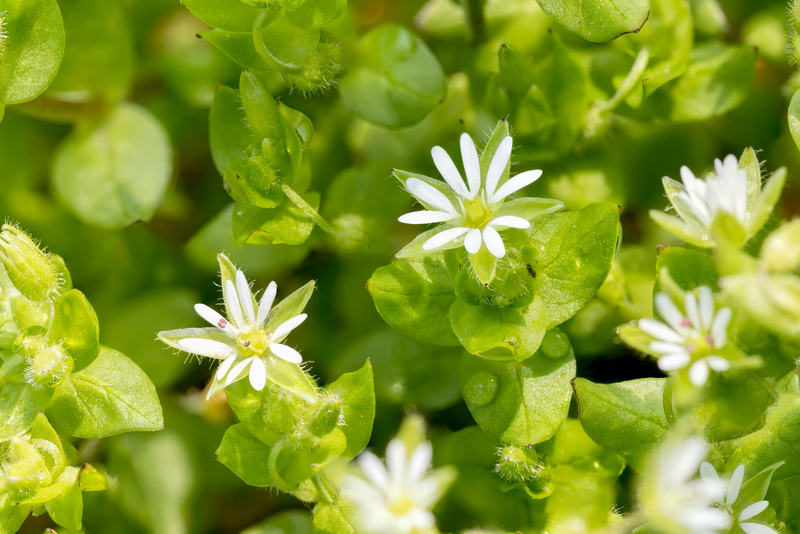From Seed to Table: Growing the Perfect Herb Garden
Posted on 05/06/2025
From Seed to Table: Growing the Perfect Herb Garden
Imagine snipping fresh basil for a homemade pizza, or adding a dash of just-harvested thyme to roasted vegetables -- all grown by you. Creating a thriving herb garden isn't just rewarding; it brings nutrition, flavor, and beauty to your home. Whether you're new to gardening or a seasoned green thumb, this step-by-step guide will walk you through cultivating a lush, bountiful herb garden from seed to table.
Why Start Your Own Herb Garden?
- Cost savings: Pay pennies for seeds compared to buying fresh herbs at the store.
- Superior flavor: Nothing compares to the vibrancy of homegrown herbs.
- Health benefits: Fresh herbs retain more nutrients and antioxidants.
- Sustainability: Reduce food miles and chemical exposure.
- Therapeutic: Gardening improves mental well-being and mindfulness.

Choosing the Right Herbs for Your Garden
Before sowing seeds, consider which culinary herbs best fit your tastes and needs. Some herbs are annuals, needing replanting each year, while others are perennials that come back every season.
Popular Annual Herbs
- Basil - Perfect for Italian dishes and summer salads.
- Cilantro - Essential for Mexican, Asian, and Indian cuisines.
- Dill - Excellent for pickling and seafood.
- Parsley (Biennial, but often grown as an annual) - Wide culinary uses.
Top Perennial Herbs
- Thyme - Versatile and hardy.
- Chives - Mild onion flavor, great for garnish and cooking.
- Mint - Vigorous grower, ideal for teas, desserts, and cocktails.
- Oregano - Classic Mediterranean flavor.
- Rosemary - Robust flavor and aroma.
- Sage - Essential for poultry dishes.
- Lemon Balm - Citrusy scent, good for teas and salads.
Pro Tip: Start with culinary herbs you use most in your cooking for satisfaction and practicality.
Planning Your Herb Garden
Indoor vs. Outdoor Herb Gardens
- Indoor herb gardens work well for year-round harvest in small spaces or in climates with harsh winters.
- Outdoor herb gardens generally yield more robust growth due to better sunlight and airflow.
Choosing a Location
Sunlight is key! Most herbs require at least 6 hours of direct sunlight per day. South-facing windowsills are ideal for indoor gardens. Outdoors, choose a spot with fertile, well-drained soil.
Garden Bed, Pots, or Containers?
- Raised beds: Great for large herb gardens or when soil quality is poor.
- Pots and containers: Ideal for patios, balconies, and kitchens. Allows for portable sun chasing.
- Window boxes: Space-saving and decorative!
Sowing the Seeds: Step-by-Step
Step 1: Get Supplies
- High-quality herb seeds
- Seed starting mix or potting soil
- Seed trays, pots, or containers with drainage holes
- Spray bottle or watering can
- Labels and markers
Step 2: Seed Sowing Guide
- Moisten your soil before filling containers. It should be damp but not soggy.
- Fill containers with the potting mix, leaving about one inch from the top.
- Plant seeds:
- Small seeds (basil, oregano, thyme): Sprinkle on top and lightly press in.
- Larger seeds (cilantro, dill, chives): Sow just under the surface (about 1/4 inch deep).
- Label each tray or pot with the herb name and date.
- Water gently using a spray bottle or fine nozzle.
- Cover with a humidity dome or plastic wrap until seedlings emerge (optional but helpful).
Step 3: Germination Tips
Warmth and moisture are essential for herb seed germination. Most seeds sprout best at temperatures between 65-75?F (18-24?C). Set trays in a warm place with indirect sunlight. Once seedlings emerge, move to a sunny spot or under grow lights.
Thinning and Transplanting
When seedlings have at least two sets of true leaves, gently thin them so the strongest plants remain, giving them room to grow. If your herbs become crowded in their trays, transplant them into larger pots or directly into the garden after the risk of frost has passed.
Caring for Your Herb Garden
Watering Wisely
Herbs hate soggy soil! Water when the top inch of soil feels dry. Aim for deep but infrequent watering--this encourages roots to grow deep, making plants more resilient. Morning is the best time to water and reduces fungal diseases.
Fertilizing for Lush Growth
- Go light: Over-fertilizing can lead to lush leaves but weak flavor. Use an organic, all-purpose fertilizer at half strength once per month during active growth.
- Compost top-dressing: Add an inch of finished compost each spring for healthy soil.
Pruning and Pinching
Regular harvesting is crucial for bushy, healthy herbs. Pinch back the tips by half an inch every few weeks to prevent flowering and stimulate new growth.
Pest and Disease Management
Most culinary herbs have natural pest-repelling properties, but watch for:
- Aphids - Spray with a strong jet of water or neem oil.
- Powdery mildew - Ensure adequate airflow and remove affected leaves.
- Slugs/Snails - Hand-pick or use organic barriers.
Harvesting Herbs for Peak Flavor
Best Time to Harvest
- Mornings: Harvest after dew has dried but before the hottest part of the day. Oils (flavor) are most concentrated then.
How to Harvest
- Use clean scissors or pruners to snip stems just above a set of healthy leaves.
- Never remove more than one-third of the plant at a time.
- Regular trimming encourages fuller, more productive herbs.
From Herb Garden to Kitchen Table
Using Fresh Herbs in Cooking
Fresh-cut herbs add complex flavors, aroma, and nutrition to every meal. Here's how to make the most of your harvest:
- Chop basil and parsley into salads, pasta, and sauces just before serving.
- Infuse mint leaves in summer beverages for refreshing drinks.
- Add rosemary stems to marinades and roasted vegetables.
- Sprinkle chives on baked potatoes, eggs, or soup for a pop of color and flavor.
Preserving Your Homegrown Herbs
- Drying: Hang stems upside-down in bundles until fully dry. Crumble and store in airtight containers away from light.
- Freezing: Chop herbs, pack into ice cube trays, cover with olive oil or water, and freeze for instant seasoning.
- Herb butters & oils: Blend soft herbs with butter or olive oil for flavorful spreads or finishing oils.
- Vinegars and infusions: Add woody herbs to vinegar or oil for homemade gourmet condiments.
Common Challenges, Expert Solutions
Why are my herbs leggy or pale?
Solution: Not enough sunlight (aim for 6-8 hours daily); pinch stems regularly to encourage bushiness.
Herbs turning yellow?
Solution: Overwatering is the biggest culprit. Allow soil to nearly dry out before watering again, and ensure pots have drainage holes.
Herbs bolt (flower) too soon?
Solution: Hot weather triggers flowering in annuals like cilantro and basil. Pinch off flower buds early and harvest frequently.
Creative Ideas for Your Herb Garden
- Vertical herb walls - Perfect for small spaces or decorative kitchen displays.
- Herb spiral gardens - Beautiful and functional, allowing for different sun/water needs.
- Windowsill mini-gardens - Grow microgreens or compact herbs like thyme and oregano indoors year-round.
- Themed gardens - Grow a "pizza garden" with basil, oregano, and parsley, or a "tea garden" with mint, lemon balm, and chamomile.
Troubleshooting Guide: Quick Reference Table
| Issue | Cause | Solution |
|---|---|---|
| Leggy plants | Low light, overcrowding | Move to brighter location, thin seedlings |
| Yellow leaves | Overwatering, poor drainage | Reduce water, improve drainage |
| Wilting | Underwatering, root rot | Check soil moisture, correct watering |
| Poor flavor | Too much fertilizer, late harvesting | Reduce feeding, harvest early |

FAQs About Growing the Perfect Herb Garden
Can I grow a herb garden indoors year-round?
Absolutely! Choose compact varieties, supply adequate light (south-facing window or grow lamps), and avoid overwatering.
How long do herb seeds take to germinate?
Most herb seeds sprout in 5-21 days, depending on type and warmth.
Which herbs grow best together?
- Similar needs: Pair Mediterranean herbs (rosemary, thyme, oregano, sage).
- Moisture lovers: Group basil, parsley, and cilantro together.
- Separate mint: Mint's aggressive roots can overwhelm others, so plant in its own pot.
Do herbs need much fertilizer?
Minimal feeding is best; too much can impair flavor and growth habit. Use a half-strength organic fertilizer monthly, or just compost.
Conclusion - Enjoy Your Seed to Table Herb Garden
Growing the perfect herb garden transforms your meals, beautifies your space, and brings the satisfaction of nurturing life from seed to table. By following this guide -- from selecting the right herbs, to sowing, cultivating, harvesting, and using them fresh -- you can enjoy aromatic, flavorful dishes all year long.
Start your own herb garden, experiment with new varieties, and savor the difference that fresh, homegrown herbs make. The journey from seed to table is just a few snips away--happy growing!



